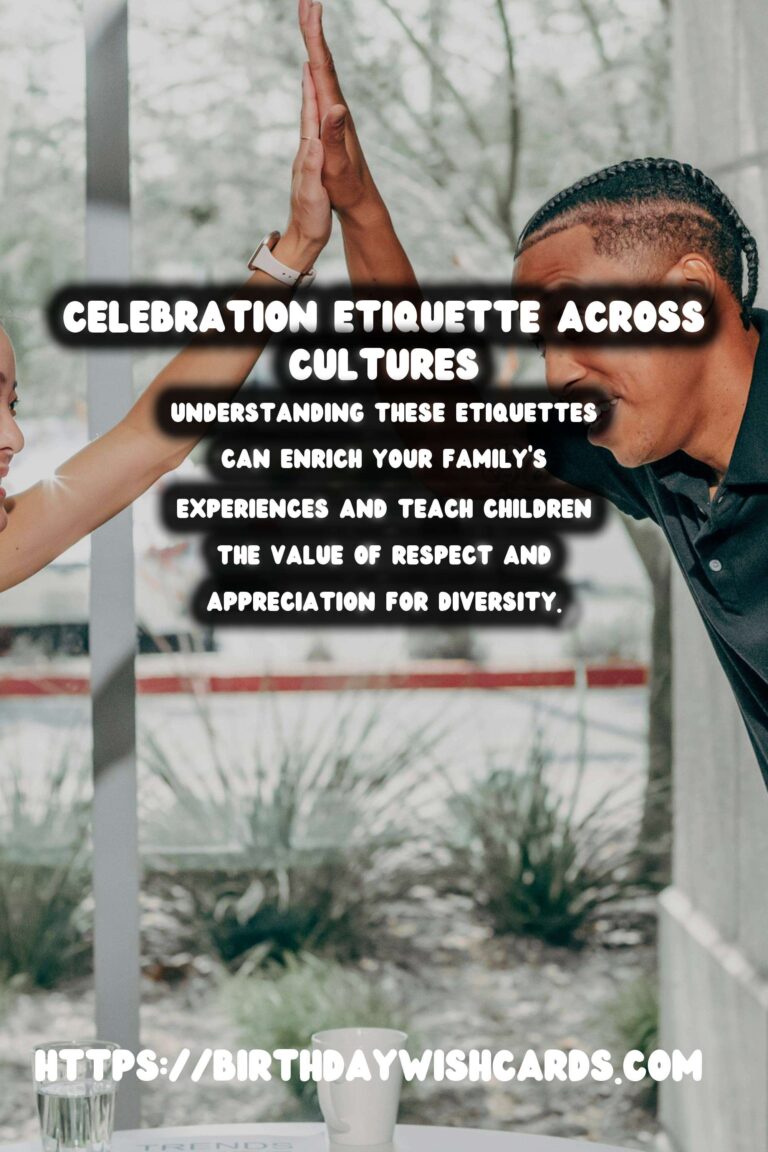
Celebrating special events is an essential part of family life, and different cultures have unique customs and traditions associated with their celebrations. Understanding these etiquettes can enrich your family’s experiences and teach children the value of respect and appreciation for diversity. In this article, we explore the top 20 celebration etiquette practices from around the globe that are perfect for the whole family.
1. Japan: Bowing and Gift Giving
In Japan, bowing is a sign of respect, particularly during greetings and farewells. When attending a celebration, such as a birthday party, it’s customary to bring a gift, often wrapped beautifully. Opt for practical gifts like stationery or sweet treats.
2. Italy: La Dolce Vita and Generosity
Italians embrace the concept of ‘La Dolce Vita’ (the sweet life) during celebrations. Family gatherings often involve extravagant spreads of food, and it’s polite to sample everything. Remember to say ‘Buon Appetito!’ before diving into the meal.
3. India: The Importance of Touching Feet
During festivals like Diwali, it’s customary to greet elders by touching their feet as a sign of respect. This practice is an integral part of Indian culture and teaches children the importance of honoring their elders.
4. Mexico: Breaking Piñatas
Celebrations in Mexico often feature a piñata, filled with candies and toys. Kids take turns blindfolded, trying to break it open. Traditionally, the piñata symbolizes adversity, and breaking it signifies overcoming challenges.
5. South Korea: Respectful Toasting
When toasting with drinks, it’s essential to use both hands and to respect hierarchies. The younger members of the family should wait for the eldest to take the first sip as a gesture of respect.
6. Thailand: The Songkran Festival
During Thailand’s New Year celebration, Songkran, families participate in water fights to symbolize cleansing and renewal. It’s a fun way to engage in tradition while staying cool!
7. Scotland: The Ceilidh Dance
Scottish celebrations often involve traditional dancing, known as ceilidh. It’s a family-friendly event where everyone can join in, regardless of skill level. Familiarizing kids with the steps can make this experience even more enjoyable.
8. China: Red Envelopes
During Lunar New Year, families exchange red envelopes filled with money. It is a sign of good luck and prosperity. Teaching children the significance of this tradition adds value to the celebration.
9. Russia: Toasts and Tradition
In Russia, making toasts at celebrations is vital. Guests take turns expressing heartfelt wishes while holding their glasses. It’s a great teaching moment for kids about expressing gratitude and good intentions.
10. Jamaica: Vibrant Music and Food
Jamaican celebrations are often lively, featuring reggae music and traditional dishes like jerk chicken. Engaging in the rhythm of the music and the flavors of the food can create a memorable experience for families.
11. France: The Art of Dining
In France, meals are more than just food; they are social gatherings. In celebrations, children are expected to use proper table manners and engage in polite conversation. This can help instill respect for dining traditions.
12. Egypt: Sharing Meals
Egyptians value the act of sharing a meal during celebrations. It’s common to welcome family and friends at home, emphasizing communal joys and experiences. Teach your children the beauty of sharing and kindness.
13. Brazil: The Importance of Family
In Brazil, family is at the center of every celebration, whether it’s Carnival or a family gathering. Inclusive celebrations welcome everyone, teaching children the importance of unity and togetherness.
14. Greece: Breaking Bread and Plates
In Greece, breaking plates is a common practice during festive gatherings to symbolize good fortune. However, it’s also essential to maintain decorum and respect for the host’s setting.
15. Spain: The Siesta Tradition
Many Spanish celebrations take place late into the night, and it’s customary to take a siesta before evening festivities. Educating your family about this practice emphasizes the value of rest and balance.
16. Nigeria: Community Involvement
Nigerian celebrations are often community-oriented, with extended family and friends coming together. Participation in traditional dances and songs fosters a sense of belonging and teaches unity to children.
17. Philippines: The Beauty of Family Reunions
Filipino celebrations often include family reunions featuring traditional dishes. Engaging kids in this tradition fosters love for family bonds and cultural heritage.
18. Vietnam: Tea Ceremony Etiquette
During celebrations, Vietnam has a revered tea ceremony that symbolizes respect. Younger generations serve tea to elders, teaching kids about humility and appreciation.
19. United States: Celebrating Diversity
In the U.S., celebrations often reflect diverse cultures and traditions. Families can celebrate various holidays through food, music, and activities, teaching kids about inclusivity and acceptance.
20. Finland: Embrace Nature
Finnish celebrations often take place in nature during summer. Educating kids to appreciate the outdoors strengthens family bonds and promotes environmental respect.
In conclusion, understanding celebration etiquettes around the world can enhance your family’s experiences during various festivities. By teaching children these practices, you develop their awareness and appreciation for different cultures. Cherish these moments, as they foster learning and create lasting memories.
Celebrating special events is an essential part of family life, and different cultures have unique customs and traditions associated with their celebrations. Understanding these etiquettes can enrich your family’s experiences and teach children the value of respect and appreciation for diversity. 
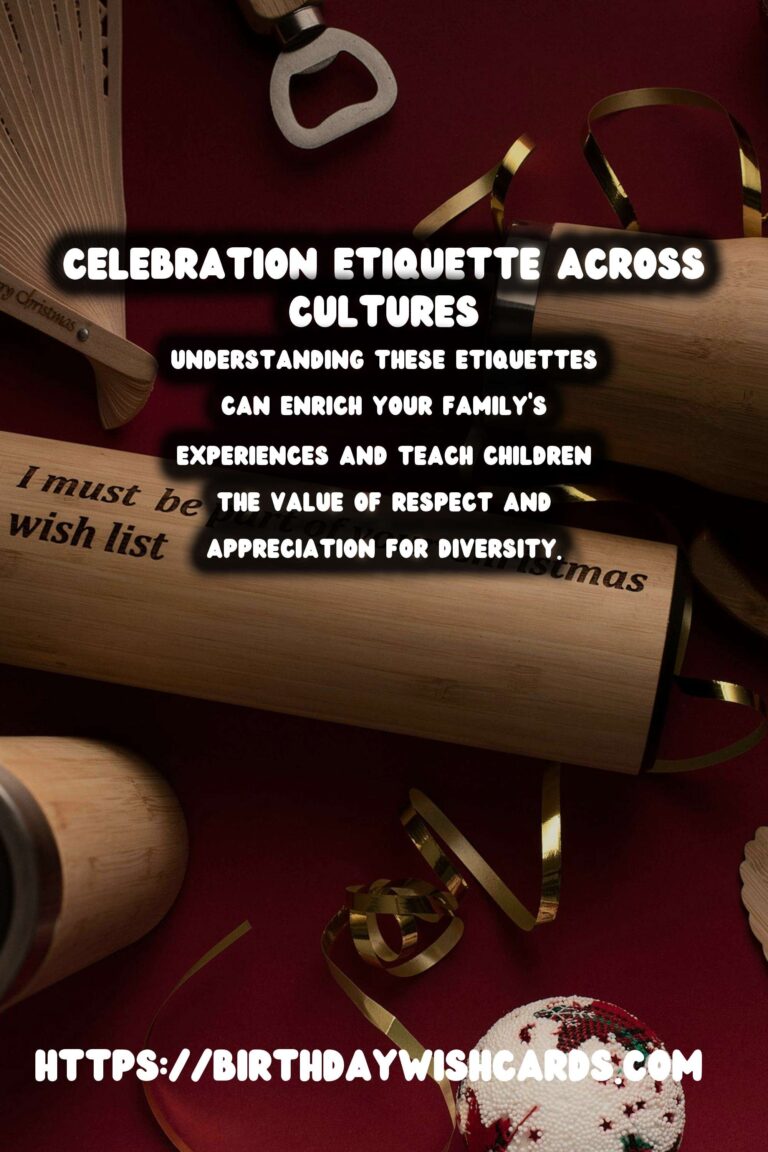
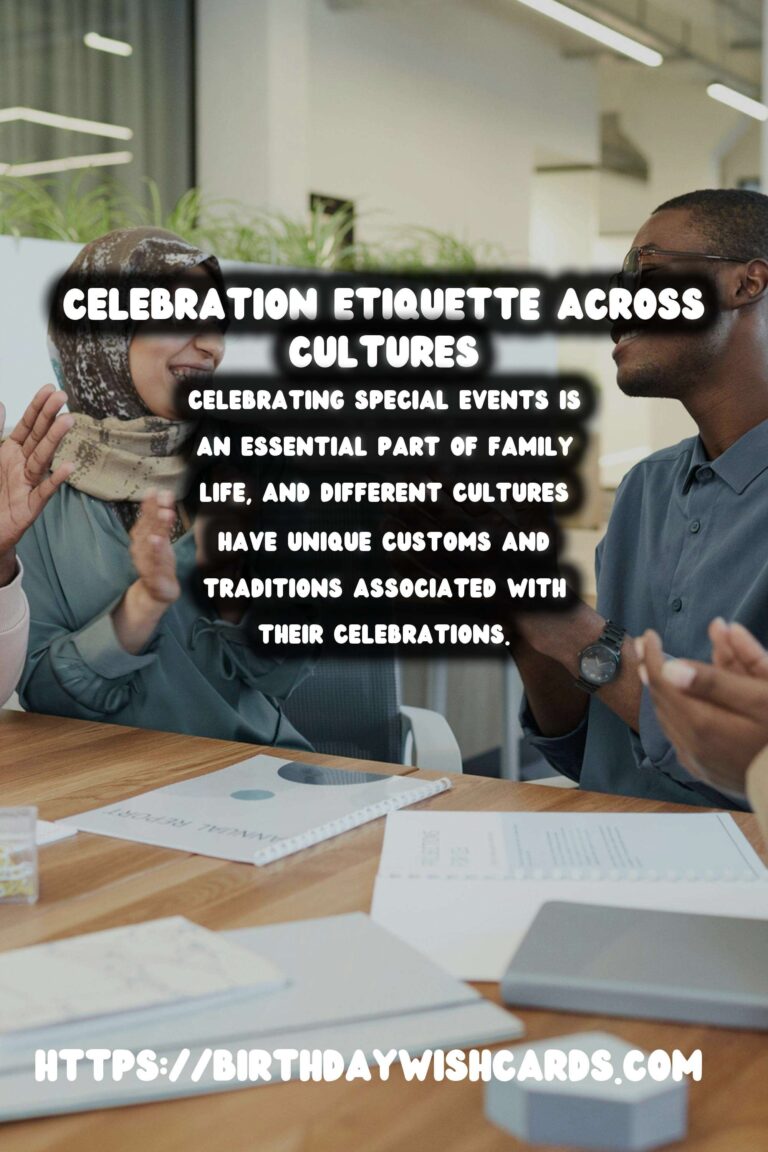
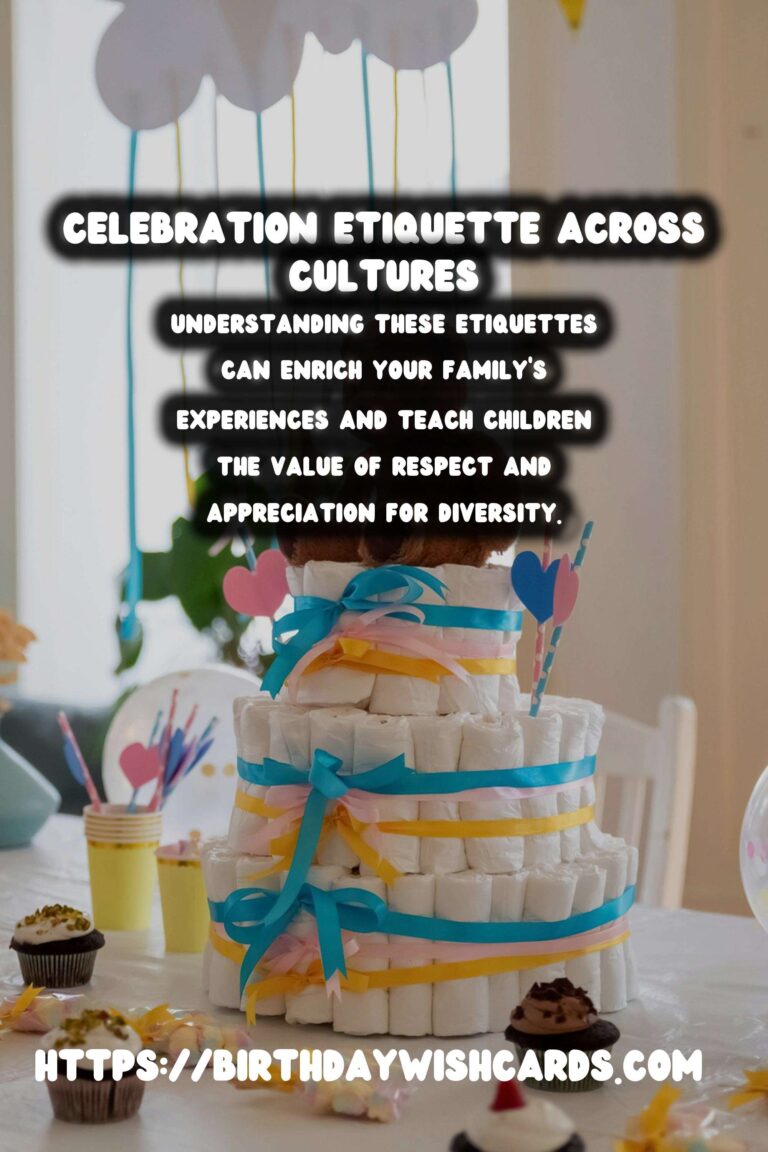

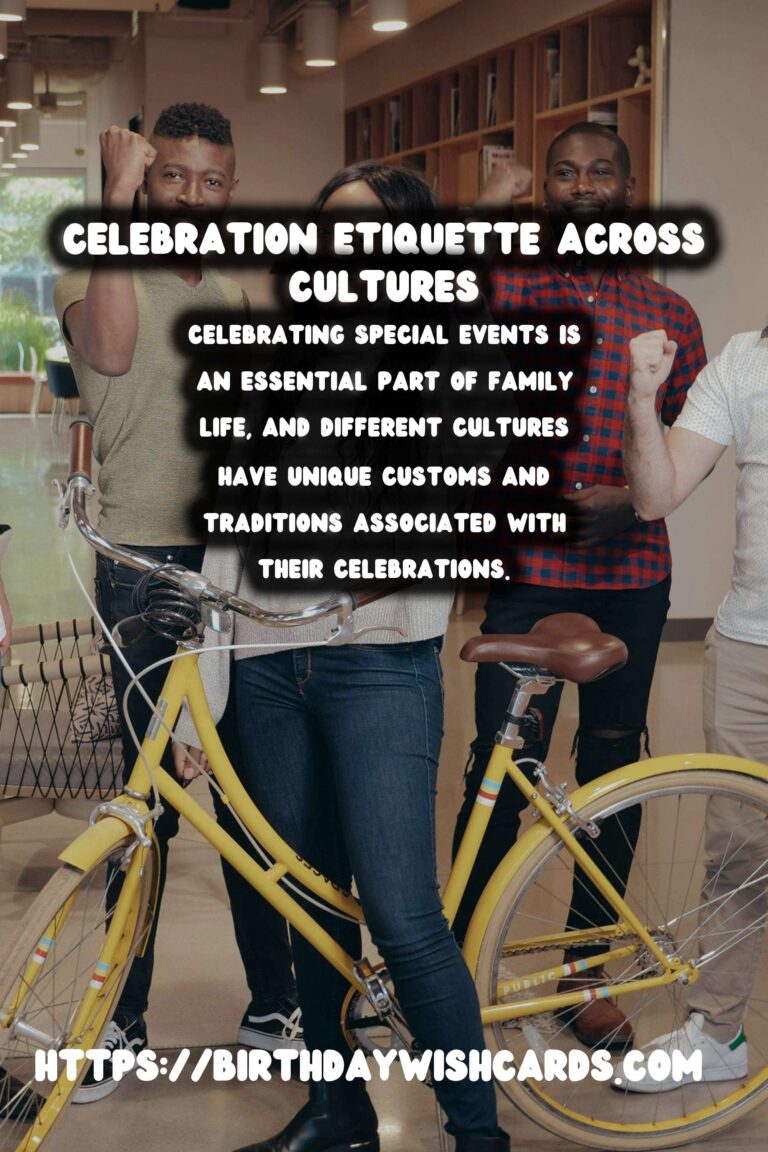

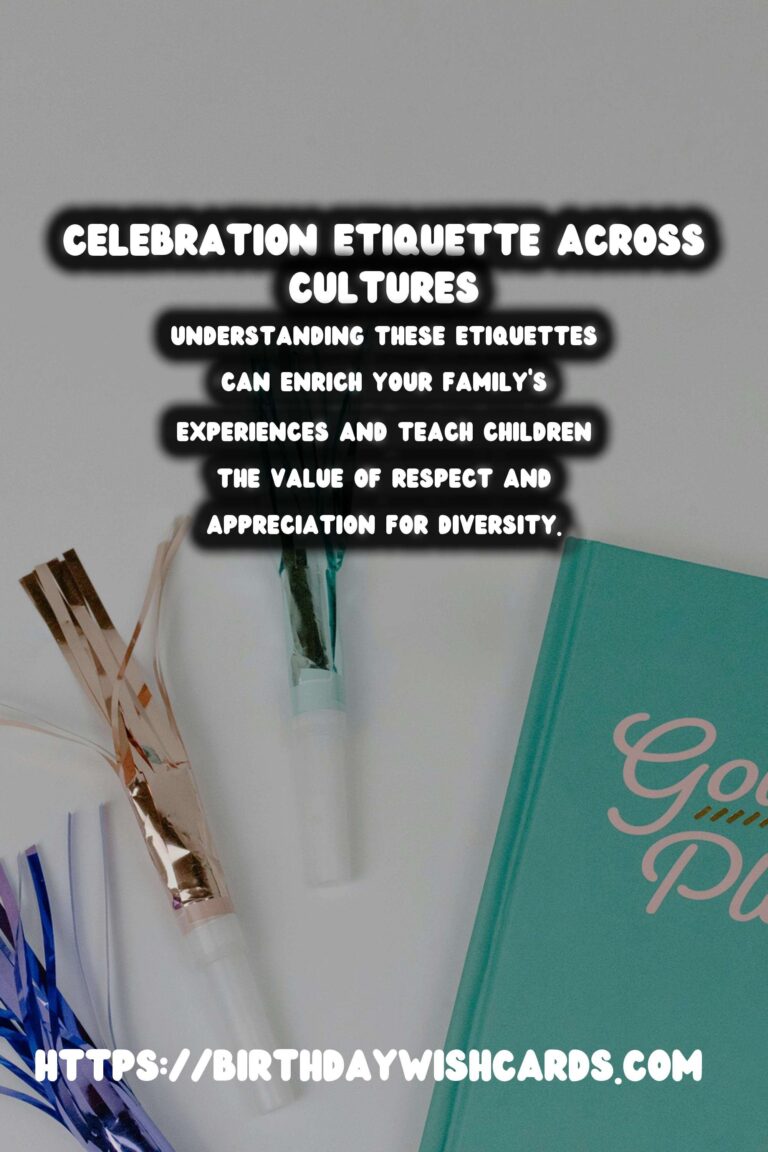
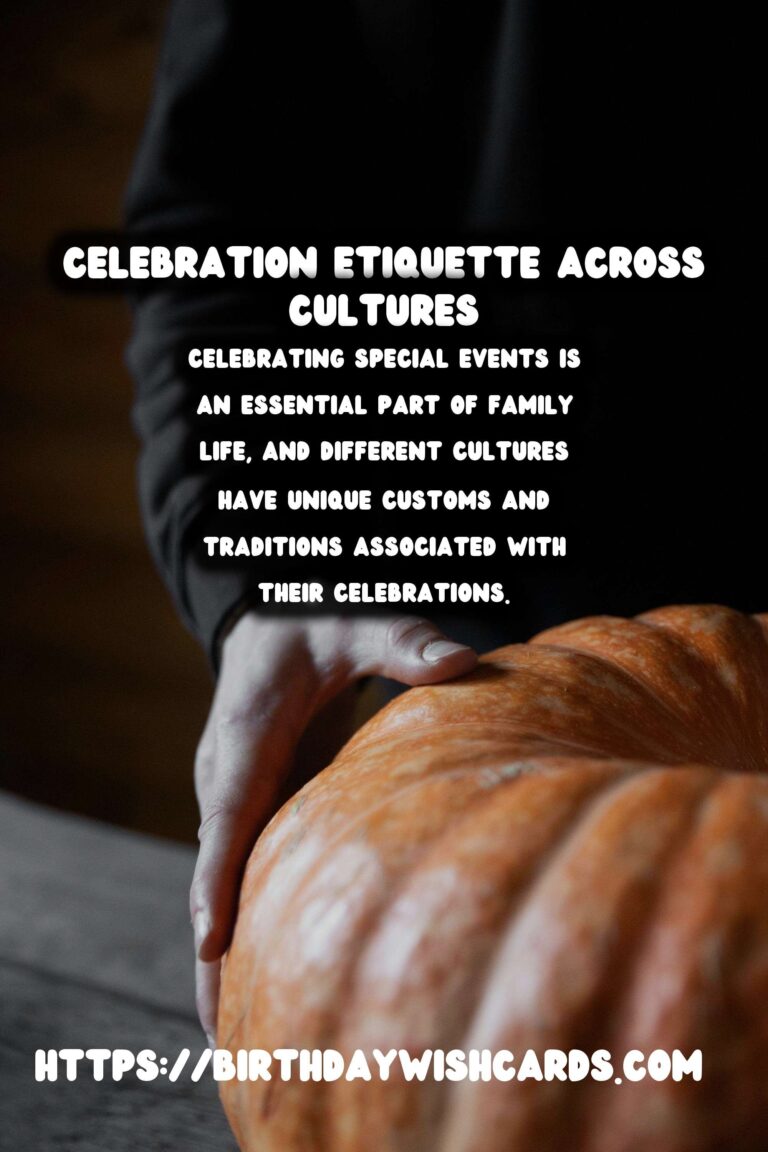
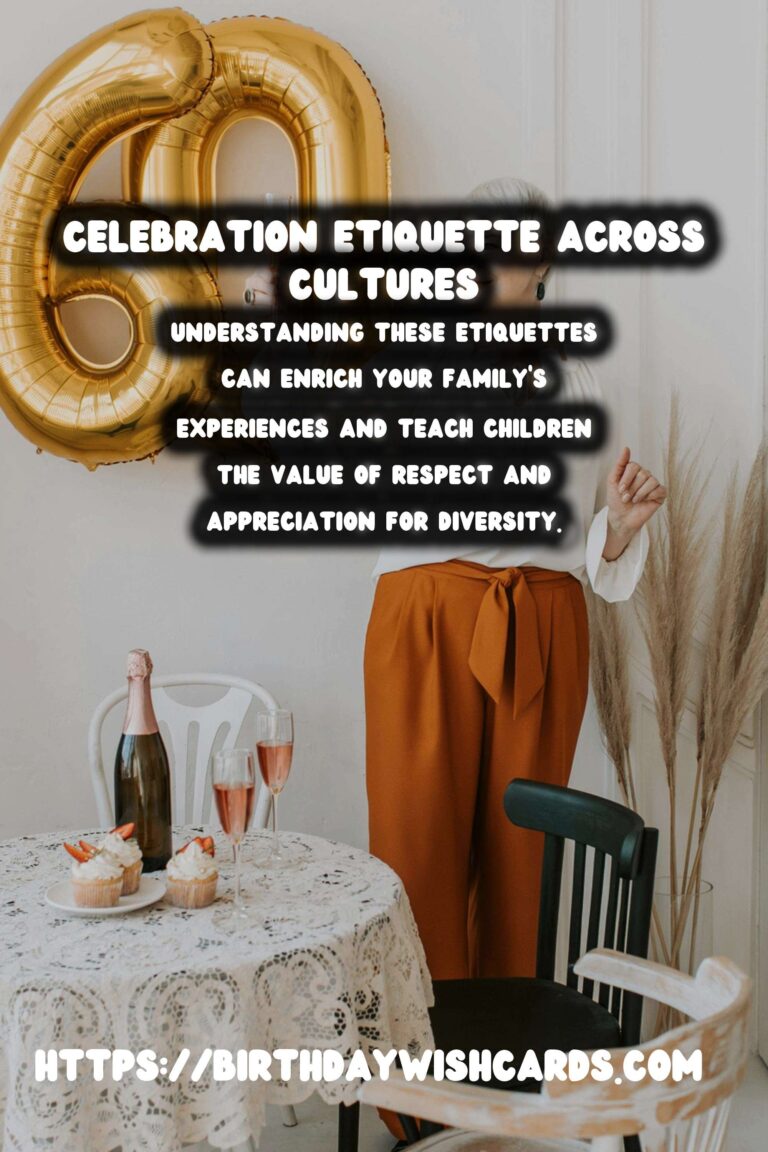
#CelebrationEtiquette #FamilyTraditions




